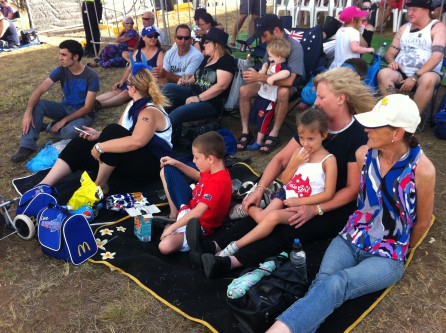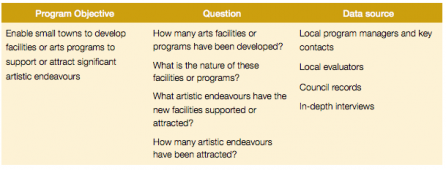 Culture is one of society’s intangibles concepts. Intangibles are aspects of society that cannot be seen, touched or heard. They are not solid objects like products, audiences or exhibition objects. Rather, they are things such as ideas, risks, wellbeing, values, effectiveness, quality, image and legacy.
Culture is one of society’s intangibles concepts. Intangibles are aspects of society that cannot be seen, touched or heard. They are not solid objects like products, audiences or exhibition objects. Rather, they are things such as ideas, risks, wellbeing, values, effectiveness, quality, image and legacy.
Is it really possible or ethical to assign a value (even a dollar value) to things that are intangible? How can a value be placed on culture, the arts, the environment, health or wellbeing? And why is it necessary? Well, it is becoming increasingly necessary for policy makers and decision makers to weigh up the benefits of particular initiatives, policies and programs over others, including the arts, regional policy and cultural initiatives. And this often comes down to understanding the bottom line; the financial benefits.
Douglas Hubbard is an American inventor of economic theory, a writer and consultant. He demonstrates that intangibles that appear to be completely intractable can be measured and that this measurement can be done in a way that is economically justified.
Much of my work as a consultant involves conducting evaluations of intangible concepts such as arts-led initiatives, environmental programs and government policy. I am given the exciting yet challenging task of evaluating such intangible concepts with the aim of helping my client understand the success factors, weaknesses, efficiency, effectiveness and the intrinsic value of their programs. My challenge is to determine what can be measured, and how. The work of Douglas Hubbard has helped me enormously in understanding how to approach these projects.
When confronted with apparently difficult measurements, it helps to put the proposed measurement into context. This often comes about from an initial conversation I have with a client. In this important conversation I encourage them to articulate what decision the measurement is supposed to support, the definition of the thing being measured, the importance of the intangible to the decision being made, what they already know about it, and what is the value of additional information to them.
Once the measurement problems has been teased out, I make the transition from understanding what to measure to how to measure it.
The important process of decomposition
One of Hubbard’s key methods of evaluating and measuring intangibles is to decomposing an uncertain variable into constituent parts to identify directly observable things that are easier to measure. I use this approach in every evaluation when I carry out the first essential task of preparing an evaluation plan.
I am currently faced with the challenge of evaluating how a state-wide Victorian Government regional arts initiative Small Town Transformations is transforming regional towns. The pilot initiative is funded at $2 million by the Victorian state government over a two year period. There are five small participating towns, each receiving $350,000 over a two-year period. I have been commissioned by Regional Arts Victoria to evaluate how Small Town Transformations strengthens the value of the arts for communities in regional and rural Victoria and contributes to the transformation of the local regions. There are many intangible concepts in there, including strength, transformation and values.
I used Hubbard’s decomposition approach to understand the intangibles and how they can be measured. I have taken each stated objective of Small Town Transformations and decomposed it into a series of steps that have lead me to data sources to find the information that can be measured.
For example, taking just one of the objectives of Small Town Transformations, here is how I decomposed it.

By using this decomposition approach, the uncertainty is reduced, the intangible takes on a level of tangibility and numbers and values can be applied.
Many of Hubbards other approaches to measuring intangibles are more complex. They can be applied to situations in which businesses need to asses risk and uncertainty and make multi-million dollar decisions around those problems.
The cultural sector in Australia faces the dilemma of proving its value in a way that can be understood by decision-makers. There is ongoing debate about whether it is right to assign value to intangibles such as culture. I believe that if the limitations of the process are acknowledged, the methodology is sound and the measurement logical, it can be useful and even necessary in enhancing our understanding and appreciation of the sector.
I will be participating in discussion about this issue at the Spectres of Evaluation Conference, February 6-7 at the Footscray Community Arts Centre, Melbourne. I will be on a panel discussion with Esther Anatolitis, Director of Regional Arts Victoria, as well as Small Town Transformation project participants Serana Hunt and Helen Kelly from the Victorian town of Dookie. If you’re in Melbourne, it would be great to have you there to be part of the discussion.
